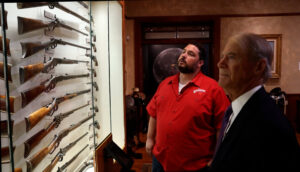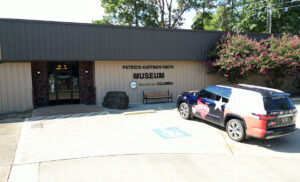
Hemphill – The serene beauty of East Texas isn’t often interrupted. Occasionally you might hear a train far off in the distance or come across a few wild hogs hanging out under the trees. But on February 1st, 2003, this part of our state saw the unimaginable take place in the sky above. The Space Shuttle Columbia was returning from a 16-day mission when it disintegrated upon reentry and broke into pieces over East Texas. “Those astronauts were 16 minutes back into Earth atmosphere and they were 16 minutes from home, and we lost them,” said Veronica Thomas, an Air Force veteran and one of the founders of the Remembering Columbia Museum in Hemphill. “38% of the shuttle was recovered in Eastern Texas, over 85,000 parts.”
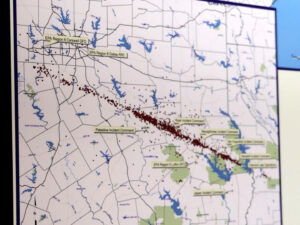
Marsha Cooper, a member of the Texas Forest Service, is another person who was in Hemphill when the tragedy occurred. She also helped found the museum, and she’ll never forget that fateful Saturday when the pieces of the shuttle started falling from the sky. “I knew it was them. I knew it was the Shuttle,” said Cooper. “I was home on a Saturday morning like everybody else. I have an insert fireplace at my house and that thing went to shaking, the windows went to shaking. And all of a sudden, the sonic booms went to going off, and I didn’t know what was going on. 9/11 hadn’t been, what, two years before, and I didn’t know if we were under attack. And people thought a train had derailed. They didn’t know if the refineries down in Houston had blown up. I mean, everybody was calling, ‘What’s going on?’ Just looking in the sky and you could see the smoke trails through the sky. Still hard to look at to this day.”
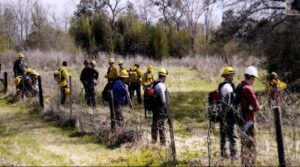
Cooper knew that a recovery would be starting quickly, so she headed to the Texas Forest Service office to get ready. “You could see the debris,” said Cooper. “You could see the white Kevlar stuff that was on the side of the road. You could just see things everywhere, and I knew it wasn’t trash. Everybody just started pulling together and doing what they do best, doing great jobs.”
Veronica Thomas was also a part of the massive recovery effort that took place during the following days. “133 federal and state and local agencies involved in the recovery effort, and the rest volunteers,” said Thomas. “There were, I think, 125,000 volunteers. To date, it is still considered the largest recovery effort in the United States.”
Those efforts and the memories of the Astronauts lost that day are preserved at the Remembering Columbia Museum, an idea that came to the founders a few years after the tragic accident. “We didn’t really know what we wanted to do or how were we going to do it,” said Cooper. “We just didn’t really know what to do. We wanted to meet with the family first because we wanted them to be on board. We wanted them to approve what we were doing. It was important to us, whatever we did that the families of Columbia were in agreement on it.”
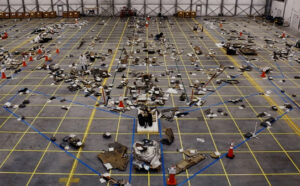
Through working with the families, the founders were able to create a plan for a museum that everyone involved would see as a good way to honor those lost on the Columbia Space Shuttle. “The family said that if there’s a museum or anything to honor our loved ones, it must be about education,” said Thomas.
And that’s exactly what they’ve done, by creating a place that doesn’t just honor the memories of the astronauts, but also accentuates their contribution to science and NASA’s mission of space exploration. “Our kids in a 200-mile radius here, they don’t have a NASA to go to and learn and do field trips,” said Cooper. “It’s a long way down there.”
Each astronaut lost that day has a display with personal items donated from family members. One of those items is a set of wings that pilot William McCool’s father brought to the museum himself. “We walked right back here. He told us who he was and he was his father, and he actually had on these gold wings right here,” said Cooper. “And he said, ‘Can you open this case?’ And I said, ‘Yes, sir, we can.’ We opened the case. He said, ‘This is where they belong.’ So those gold wings were to be presented to William McCool when he got back. And so his gold wings sit here and his father put them there.”

Other items include debris recovered from the wreckage, such as a CD brought on board by mission specialist Laurel Clark and contacts that belonged Commander Rick Husband. “The family members have either given them to us or loaned them to us, trusted us with their loved one’s possessions,” said Thomas. “Each display case tells you a story about the individual. It gives you a complete snapshot of who that person was.”
The most compelling portion of displays showcase the careers and accomplishments of these 7 incredible heroes. “These astronauts were educated,” said Cooper. “And we wanted to make sure that their story was told, because each one of them has a story about their education and about what they did in their careers and everything.”
So we remember Rick Husband, William McCool, Michael Anderson, Kalpana Chawla, David Brown, Laurel Clark, and Ilan Ramon for their contribution to mankind and for inspiring the next generation of scientists who look to the stars. “To me, it represents faith, closure, tenacity, and just not giving up, and seeing the big picture,” said Thomas. “The story needs to be told over and over and over again. We must never forget.”


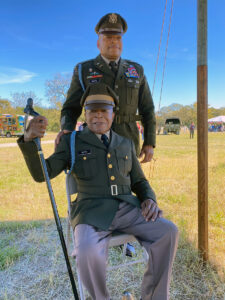

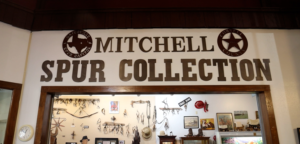


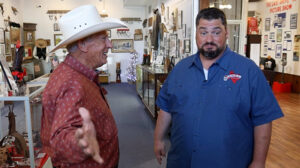
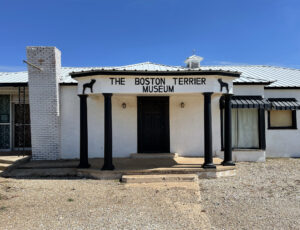
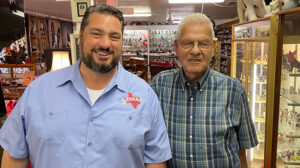

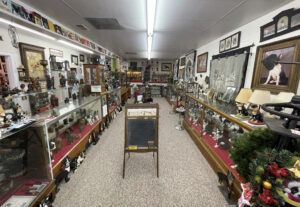
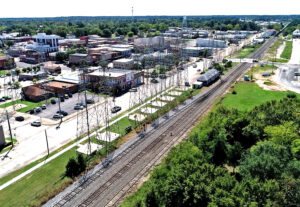
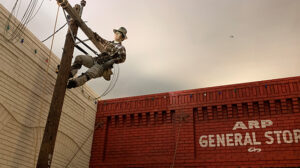
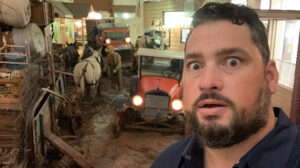
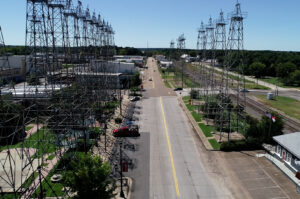
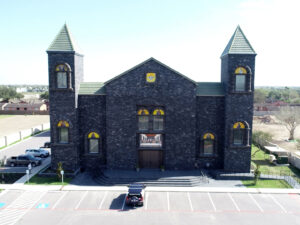



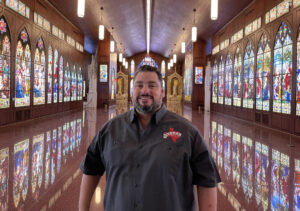
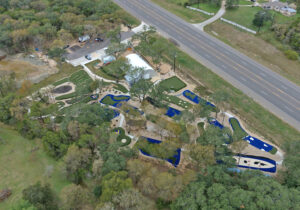

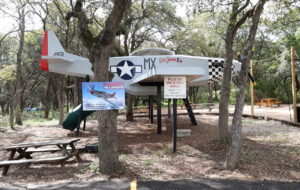
 One of those veterans featured is Abilenian Huie Lamb. The playscape is a replica of his plane and inside the museum at Memorial Mini-Golf you’ll find a display dedicated to him along with a collection of his things. You’ll also find the uniform of Dorothy Lucas, who served with the Women Airforce Service Pilots. “This one gets overlooked, I think a lot, in history where all the able body guys that could fight went overseas and who, who was, who was making and helping with the war production in the United States. And they stepped up big,” explained Brian.
One of those veterans featured is Abilenian Huie Lamb. The playscape is a replica of his plane and inside the museum at Memorial Mini-Golf you’ll find a display dedicated to him along with a collection of his things. You’ll also find the uniform of Dorothy Lucas, who served with the Women Airforce Service Pilots. “This one gets overlooked, I think a lot, in history where all the able body guys that could fight went overseas and who, who was, who was making and helping with the war production in the United States. And they stepped up big,” explained Brian. Being fortunate enough to have grandparents that served in the war, it’s refreshing to see the next generation have a way to learn about this amazing generation. “It’s pretty cool. Especially when they go from the course into the museum. And I hear a lot of parents saying, ‘That’s what your great-grandfather did.’ Or ‘That’s what your great-grandfather flew.’ And then they go, ‘Wow.’ Like they’re just that, that kind of makes it all worthwhile when you hear the wow factor of, ‘Wow. That’s what my great-grandfather did.’ and like, ‘That’s what he flew!’ It’s real, it’s really neat to hear that,” expressed Brian.
Being fortunate enough to have grandparents that served in the war, it’s refreshing to see the next generation have a way to learn about this amazing generation. “It’s pretty cool. Especially when they go from the course into the museum. And I hear a lot of parents saying, ‘That’s what your great-grandfather did.’ Or ‘That’s what your great-grandfather flew.’ And then they go, ‘Wow.’ Like they’re just that, that kind of makes it all worthwhile when you hear the wow factor of, ‘Wow. That’s what my great-grandfather did.’ and like, ‘That’s what he flew!’ It’s real, it’s really neat to hear that,” expressed Brian.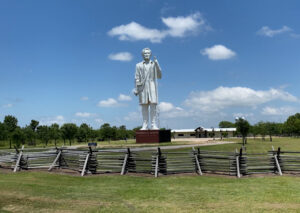
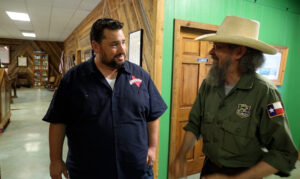
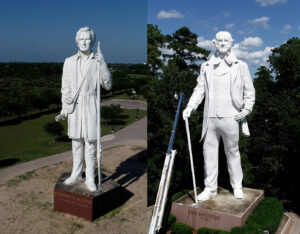
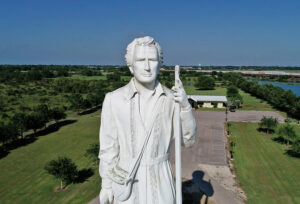
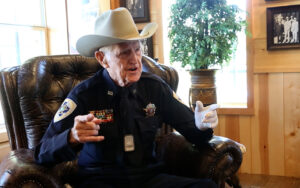
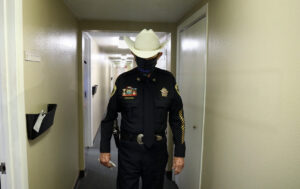

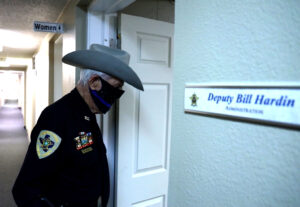
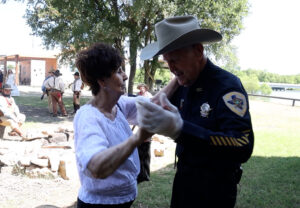
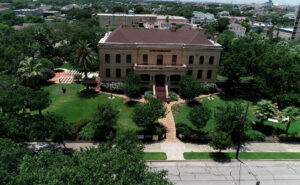
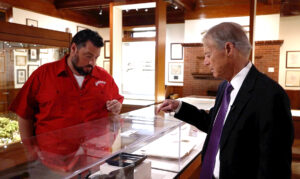 J.P has done that by opening a museum with over 70,000 pieces paramount to Texas history. “These artifacts were all part of people’s lives, in some way or the other either the maker or the user that was expressing something important through these items. So they’re much more than just a collection of artifacts,” explained J.P.
J.P has done that by opening a museum with over 70,000 pieces paramount to Texas history. “These artifacts were all part of people’s lives, in some way or the other either the maker or the user that was expressing something important through these items. So they’re much more than just a collection of artifacts,” explained J.P.